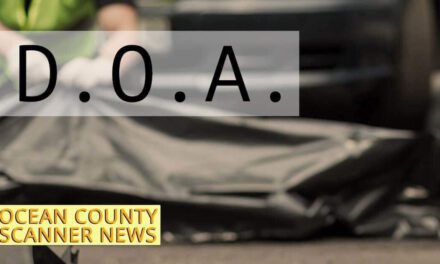TOMS RIVER – In an effort to get the word out to vote on Tuesday’s referendum, the school district recruited celebrity endorsements in the form of local sports icons Todd Frazier and Frankie Edgar.
In a video filmed in front of the Toms River Athletics Hall of Fame, New York Met third basemen Frazier advocated for the referendum to pass.
“Whether attending school here or working for the district, virtually my entire family has benefited from this school system,” he said. “Personally, as someone who came up through these schools and took advantage of everything they had to offer, from the playing fields to the classrooms, I know first-hand how crucial these resources are. Our environment shapes who we are, and these improvements will have a lasting impact on the outstanding students, teachers and staff who make up this award-winning school district.”
“This issue is close to my heart,” mixed martial arts fighter Frankie Edgar said in a video. “I travel all over the world to compete, but I call Toms River home, and our schools are a major reason why. The athletic and academic programs I participated in made me the man I am today. I want the same experience for my own children who already attend school here. They deserve more than a fighting chance. They deserve safe, secure, and comfortable and efficient classrooms, proper resources, and the opportunity to excel academically and athletically.”
The referendum will be held Jan. 22, from 8 a.m. to 8 p.m. at normal polling locations.
The referendum will fund improvements at all 18 schools, as well as five auxiliary facilities. The district has made public lists of what projects will be done at every school, and these are available at trschools.com/community/referendum. Security improvements, new roofs, HVAC, windows, and floors are among the needed construction. Some of the schools were built half a century ago.
The total price tag would be $147,148,269. However, the state has already agreed upon paying $47,281,593 of this. This leaves $99,866,676 that would be bonded, and paid off over years.
The way a referendum works is that the state pays a portion if the referendum is approved. If it’s not, the district has to fund the improvements on their own. That’s why a lot of districts use referendums to gain access to the state money. The improvements must be made anyway, they might as well get state funding for them. It would bring the overall tax impact down substantially.
The district has a calculator on its website trschools.com/community/referendum. Residents can enter their town and the assessment on their property to determine what the change in their taxes would be. The following averages were given:
• Toms River: Residents with the average home assessment of $272,400, would see an increase of $141.65 per year.
• South Toms River: Residents with the average home assessment of $165,200, would see an increase of $72.52 per year.
• Beachwood: Residents with the average home assessment of $203,600, would see an increase of $96.75 per year.
• Pine Beach: Residents with the average home assessment of $267,900, would see an increase of $132.72 per year.
The final cost could be less than this, business administrator William Doering explained. These figures were estimated based on a worse case scenario of 3.85 percent interest over 20 years. If the district is allowed to take out smaller bonds when work is ready to be done, they can shop for better percentages. So, the tax impact might not be as bad.
Another point in the plus column is that the district is going to pay off $4.7 million in debt in 2025-2026, so that should soften the blow for that year and after, he said.
Any of these projects would cost more in the future, said Doering, the business administrator. When there’s an emergency because an electrical system malfunctions or a furnace dies, it costs more to get it repaired in an emergency than to be proactive and get it repaired or replaced beforehand. Not only that, but there are liability concerns when there are staff, students, and members of the public going into buildings that are in disrepair.
Additionally, the state’s $47 million is available now. It won’t be around if the referendum fails, he said.
He explained that there were other projects that were paid in other ways, such as a $17.8 million in energy projects. What happened was that the district bonded for the $17.8 million, and the projects being done are saving $1 million annually in energy costs, so it will be paid off without raising taxes.
This is set against a backdrop of normal state aid – money not tied to a referendum – is going down. The state provides funding to every district every year. However, new figures will put Toms River at a loss of $70,685,260 over the course of seven school years. They are currently mounting a legal opposition to this.
The district has made repairs consistently. Officials said via a recent email that they have spent between $2.7 and $3.6 million in maintenance and repair every year for the last decade. By way of example, the state required Toms River to spend at least $688,000 on maintenance in the 2018-9 school year. Toms River has budgeted $3.4 million. Additionally, there were $4.7 million in capital projects funded from the capital reserve over the last few years.







How about they chip in their own money if they support it so much instead of everything falling on the backs of taxpayers already taxed to death in this state
Patrick Brennan Frazier will be paying his fair share. He lives in North Dover